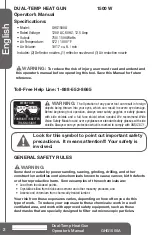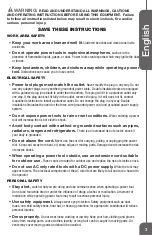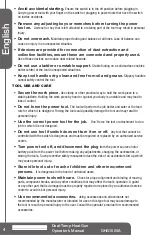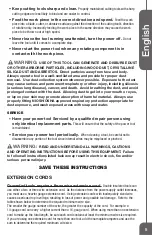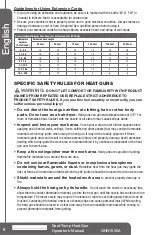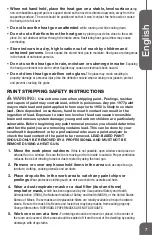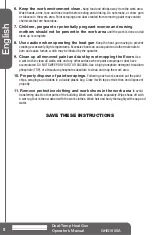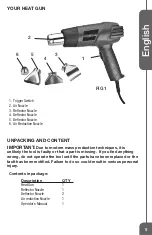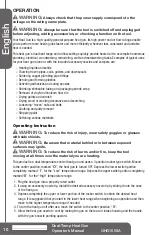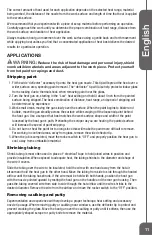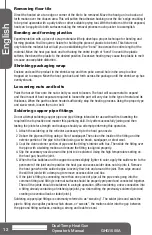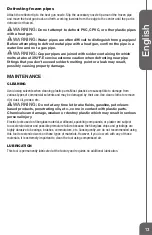
13
English
Defrosting frozen pipes
Attach the reflector tip to the heat gun nozzle. Slip the accessory nozzle tip around the frozen pipe
and move the heat gun back and forth, working inwards from the edge to the center until the part is
defrosted or thawed.
WARNING:
Do not attempt to defrost PVC, CPVC, or other plastic pipes
with a heat gun.
WARNING:
Water pipes are often difficult to distinguish from gas pipes!
Before attempting to defrost metal pipe with a heat gun, confirm the pipe is a
water line and not a gas pipe.
WARNING:
Copper pipes are joined with solder containing tin which
melts at about 392°F. Exercise extreme caution when defrosting near pipe
fittings that you don't exceed solder's melting point or a leak may result,
possibly causing property damage.
MAINTENANCE
CLEANING
Avoid using solvents when cleaning plastic parts. Most plastics are susceptible to damage from
various types of commercial solvents and may be damaged by their use. Use clean cloths to remove
dirt, dust, oil, grease, etc.
WARNING:
Do not at any time let brake fluids, gasoline, petroleum-
based products, penetrating oils, etc., come in contact with plastic parts.
Chemicals can damage, weaken or destroy plastic which may result in serious
personal injury.
Electric tools used on fiberglass material, wallboard, spackling compounds, or plaster are subject
to accelerated wear and possible premature failure because the fiberglass chips and grindings are
highly abrasive to bearings, brushes, commutators, etc. Consequently, we do not recommended using
this tool for extended work on these types of materials. However, if you do work with any of these
materials, it is extremely important to clean the tool using compressed air.
LUBRICATION
This tool is permanently lubricated at the factory and requires no additional lubrication.


